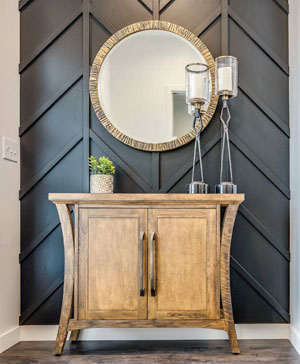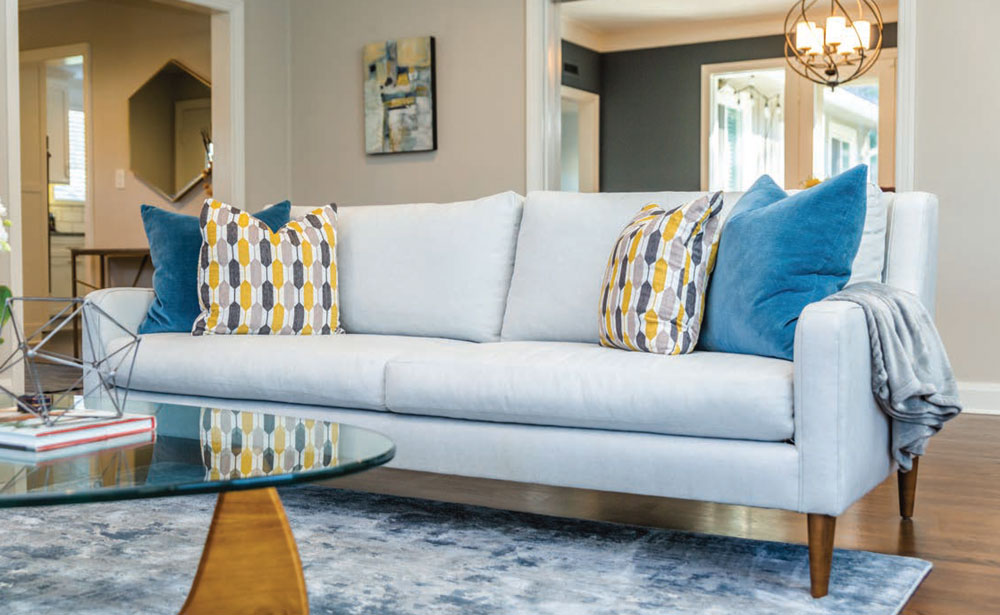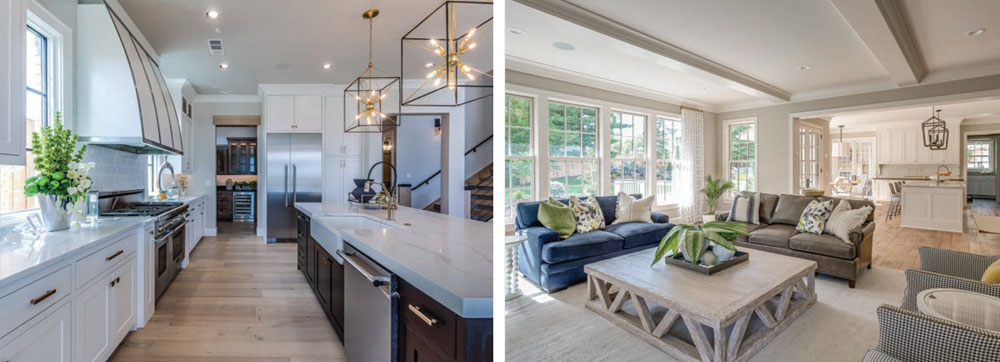UNIFYING THEMES

Design Cohesiveness at Home
Home décor can be overwhelming. With so many options available, it can be hard to determine how to make your home look put together without investing too much time or money. Thankfully, there is a way to achieve design cohesiveness throughout your home without breaking the bank.
Design cohesiveness entails using color, texture and shape to create a unified aesthetic within your space. By following some simple guidelines, you can create a cohesive home that reflects your personal style.
Curating design elements
When you’re tying together design elements in your home, there are a few things to keep in mind:
- First, think about the overall style or theme of your home. This will help you choose furniture, artwork and accessories that fit with the overall look.
- Next, consider the colors and finishes of your different pieces. Try to choose items that complement each other and create a cohesive look.
- Finally, think about the scale and proportion of your different elements. Choose pieces that are proportional to each other and fit well within the space.
By following these tips, you can create a cohesive design in your home that flows from one room to the next.
Choose a style or era
When it comes to design cohesiveness, one of the most important things you can do is determine a certain era or design style that pulls all your pieces together. This will help you create a look throughout your space and make sure that each element works together.
There are a few different ways you can go about determining the era or style for your home. First, take a look at the overall architecture of your space. If you have an older home, chances are it was built in a specific style, like Victorian or Edwardian. You can use this as a starting point for your design, and then add in elements from other eras or styles that complement it.
Another way to approach this is to start with one key piece, like a piece of furniture or artwork, and then build the rest of your room around it.
Whichever method you choose, make sure that you take the time to really consider what will work best for your space. Once you have a clear idea of the era or style you want to achieve, putting together the rest of your room will be much easier.
Don’t overdo it
When it comes to design cohesiveness in your home, there is such a thing as too much of a good thing. When every element in your home is perfectly coordinated, it can start to feel like you’re living in a showroom instead of a comfortable and inviting space. A little bit of variety can make your home feel more welcoming, so don’t be afraid to mix and match.
Break out here and there
There are definitely places in home design where you can break out of your style! The great thing about decorating your home is that you can make it unique to your taste and personality. If you want to try something new or different, go for it in these three areas:
- Your entryway provides a great place to make a bold statement. This is the first space that guests will see, so make it count!
- Have fun with your kitchen style. If you usually go for a more traditional look, why not try something more contemporary? Or vice versa!
- Experiment with different styles in your bedroom. After all, this is YOUR space to relax and escape from the rest of the world. Go ahead and mix things up a bit!
 Open concept homes
Open concept homes
In an open concept home, the layout and flow of the space is important in creating a unified design. The furniture, décor and finishes should all work together. For example, you will likely want the flooring to be the same across the connected spaces.
Colors and textures are among the most important aspects of design cohesiveness. Choose a limited color and/or texture palette and use it throughout the space. This will help to create a sense of harmony and visual interest.
The final element to consider in an open-concept home is lighting. Use lighting to create different zones within the space and highlight certain areas or pieces of furniture. This will help to add visual interest and bring the whole space together.
Identify design threads
Use a repeated element throughout the home. This could be a certain color, style, material or pattern. By using a design thread, everything in the home will flow together.
Design cohesiveness plays an important role in creating a comfortable atmosphere. By using the same color palette, furniture shapes and textures throughout your space, you can create a unified look that brings all the different elements together. Whether it’s in the form of matching upholstery or accessories, coordinating colors and patterns to make your space feel cohesive is essential to achieving a harmonious interior design style. Remember, when it comes to finding balance in your home’s design, less is more. ✦
color, design cohesiveness, design threads, home décor, material, open concept homes, overall architecture, overall theme, pattern, Style, unified aesthetic, unified design








